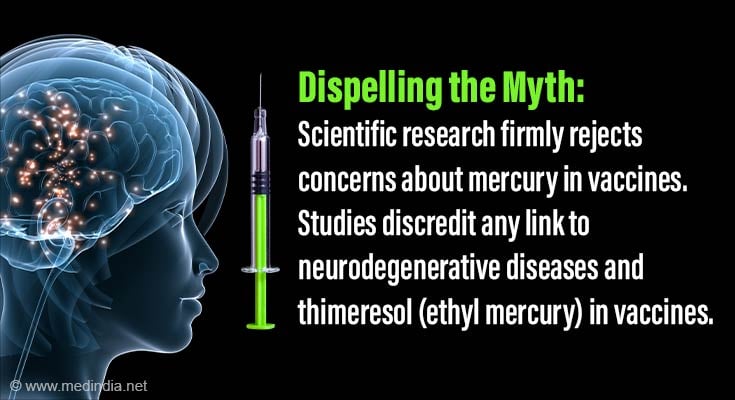In recent years, concerns about the safety of vaccines, specifically regarding the presence of mercury in the form of thimerosal, have sparked debates and raised questions about potential links to neurodegenerative diseases.
However, a comprehensive examination of scientific research firmly debunks the notion that mercury in vaccines poses a threat to human health.
Advertisement
Thimerosal and its Role in Vaccines
Thimerosal, a mercury-containing compound, has historically been utilized as a preservative in some vaccines to prevent bacterial and fungal contamination. While its application served a crucial purpose in vaccine development, concerns over potential health risks led to a precautionary reduction or elimination of thimerosal in most vaccines. It’s important to note that this decision was not arbitrary but rooted in a commitment to public safety (1✔ ✔Trusted Source
Early Thimerosal Exposure and Neuropsychological Outcomes at 7 to 10 Years
).
Advertisement
Distinguishing Types of Mercury
A key element in understanding the safety of thimerosal is recognizing the distinction between ethylmercury, the form found in thimerosal, and methylmercury, a highly toxic form present in some environmental contaminants. Scientific consensus emphasizes that ethylmercury behaves differently in the body, being broken down and eliminated more rapidly, thus reducing the likelihood of harmful accumulation.
Advertisement
Scientific Studies and Lack of Evidence
Extensive scientific studies have failed to establish any causal link between thimerosal-containing vaccines and neurodegenerative diseases, including autism. The overwhelming majority of evidence supports the safety and effectiveness of vaccines in preventing serious illnesses. These studies, often peer-reviewed and conducted by reputable institutions, consistently reinforce the importance of vaccinations in maintaining public health (2✔ ✔Trusted Source
Thimerosal-Containing Vaccines and Autism: A Review of Recent Epidemiologic Studies
).
In evaluating vaccine safety, it is crucial to rely on reputable sources of information, such as public health agencies and peer-reviewed scientific literature. The consensus among experts in the field is that the benefits of vaccination far outweigh any potential risks associated with the minimal levels of thimerosal present in some vaccines (3✔ ✔Trusted Source
Mercury Involvement in Neuronal Damage and in Neurodegenerative Diseases
The fears surrounding mercury in vaccines and its alleged association with neurodegenerative diseases have been dispelled by rigorous scientific research. Thimerosal, when used in vaccines, poses minimal risk to human health, and its removal or reduction in most vaccines reflects a commitment to ensuring the safety of immunization practices.
As we navigate discussions about vaccines, it is imperative to base our understanding on credible scientific evidence and expert consensus, promoting informed decision-making for the benefit of public health.
References:
- Early Thimerosal Exposure and Neuropsychological Outcomes at 7 to 10 Years – (https://www.nejm.org/doi/full/10.1056/NEJMoa071434)
- Thimerosal-Containing Vaccines and Autism: A Review of Recent Epidemiologic Studies – (https://www.ncbi.nlm.nih.gov/pmc/articles/PMC3018252/)
- Mercury Involvement in Neuronal Damage and in Neurodegenerative Diseases – (https://pubmed.ncbi.nlm.nih.gov/29777524/)
Source-Medindia



